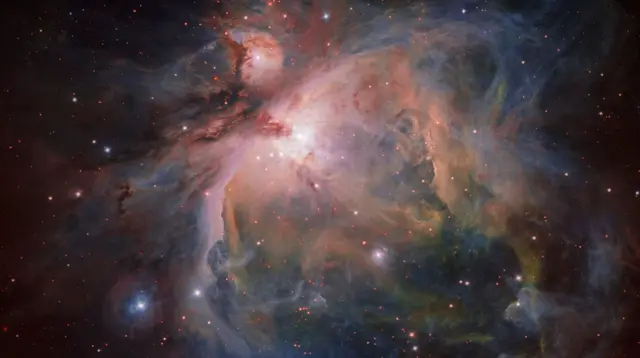Astronomers have discovered and photographed three different populations of baby stars within the Orion Nebula Cluster.
A new photograph displays their discovery, which wasn't expected when scientists pointed the new VLT Survey Telescope's OmegaCAM just below the belt of Orion.
The Orion Nebula Cluster is one of the closest stellar nurseries to Earth at only 1350 light years away and offers scientists their best view into how both high and low-mass stars are formed.
By analysing the image, scientists have found evidence suggesting that star formation within the nebula cluster is taking place in rapid bursts, with generations of stars forming within less than three million years.
Scientists from the European Southern Observatory, led by astronomer Giacomo Beccari, used data "of unparalleled quality" to measure the brightness and colour of every star in the cluster.
These details allowed the team to figure out the mass and age of each star, and the team found they could be grouped into three different generations.
"Looking at the data for the first time was one of those 'Wow!' moments that happen only once or twice in an astronomer's lifetime," said Mr Beccari.
"The incredible quality of the OmegaCAM images revealed without any doubt that we were seeing three distinct populations of stars in the central parts of Orion."
Monika Petr-Gotzens, a co-author of the paper on the findings - which will appear in the journal Astronomy & Astrophysics, described them as "highly significant".
"What we are witnessing is that the stars of a cluster at the beginning of their lives didn't form altogether simultaneously. This may mean that our understanding of how stars form in clusters needs to be modified," she added.
(SKY NEWS)
 简体中文
简体中文

